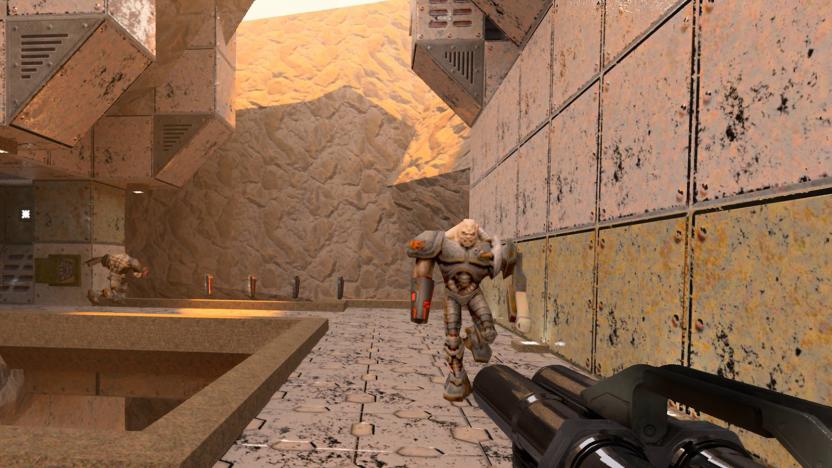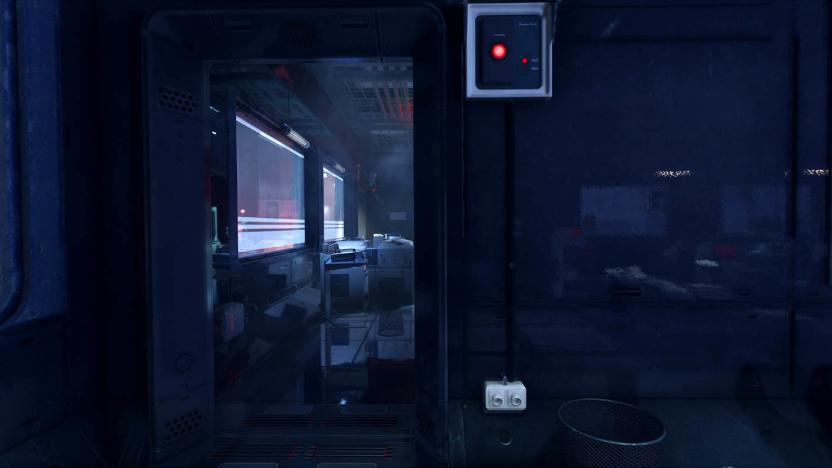Khronos Group
Latest

Ray tracing will come to more games with a new Vulkan SDK
Vulkan's updated software kit should bring ray tracing to more games and apps without depending on DirectX.

Ray tracing comes to more games thanks to new software tools
You haven't seen much ray tracing in games due in part to the limited frameworks for it. Outside of Microsoft's DirectX, creators have usually had to lean on proprietary approaches. Soon, though, it might be relatively ubiquitous. The Khronos Group has released "provisional" ray tracing extensions for Vulkan, the open graphics standard effectively replacing OpenGL on multiple platforms. You should see sophisticated reflections, fewer light artifacts and otherwise more natural-looking lighting in titles that support the technology.

OpenGL ES 3.0 and OpenGL 4.3 squeeze textures to the limit, bring OpenVL along for the ride
Mobile graphics are clearly setting the agenda at SIGGRAPH this year -- ARM's Mali T600-series parts have just been chased up by a new Khronos Group standard that will likely keep those future video cores well-fed. OpenGL ES 3.0 represents a big leap in textures, introducing "guaranteed support" for more advanced texture effects as well as a new version of ASTC compression that further shrinks texture footprints without a conspicuous visual hit. OpenVL is also coming to give augmented reality apps their own standard. Don't worry, desktop users still get some love through OpenGL 4.3: it adds the new ASTC tricks, new visual effects (think blur) and support for compute shaders without always needing to use OpenCL. All of the new standards promise a bright future in graphics for those living outside of Microsoft's Direct3D universe, although we'd advise being patient: there won't be a full Open GL ES 3.0 testing suite for as long as six months, and any next-generation phones or tablets will still need the graphics hardware to match.

OpenGL 4.0 arrives, brings more opportunities for general purpose GPU action
What's a Game Developers Conference without some sweet new tools for developers to sink their teeth into? Khronos Group, the association behind OpenGL, has today announced the fourth generation of its cross-platform API spec, which takes up the mantle of offering a viable competitor to Microsoft's DirectX 11. The latest release includes two new shader stages for offloading geometry tessellation from the CPU to the GPU, as well as tighter integration with OpenCL to allow the graphics card to take up yet more duties off the typically overworked processor -- both useful additions in light of NVIDIA's newfound love affair with tessellation and supposed leaning toward general purpose GPU design in the Fermi chips coming this month. Lest you don't care that much about desktop gaming, OpenGL ES (Embedded Systems, a mobile offshoot of OpenGL) is the graphics standard on "virtually every shipping smart phone," meaning that whatever ripples start on the desktop front will be landing as waves on your next superphone. If that holds true, we can look forward to more involvement from our graphics chips beyond their usual 3D duties and into spheres we tend to care about -- such as video acceleration. Now you care, don't ya?

AMD achieves Open GL ES 2.0 compliance, brings Xbox 360 graphics to mobile platform
A few months ago, AMD promised Xbox 360 graphics on handhelds, and as of today it's delivered on the concept. AMD announced it has achieved Open GL ES 2.0 mobile graphics technology compliance with hardware that cranks out the same AMD Unified Shader Architecture as the Microsoft gaming console. The new graphics standard will no doubt butt heads with NVIDIA's Tegra platform, which also promises serious mobile graphics. Meanwhile, AMD's comparison of their new certification to the Xbox 360 may just be a way to wow us, but we gotta wonder if this could bring some hope to a mobile Xbox 360, whether Microsoft says they're into it or not. Good times.

